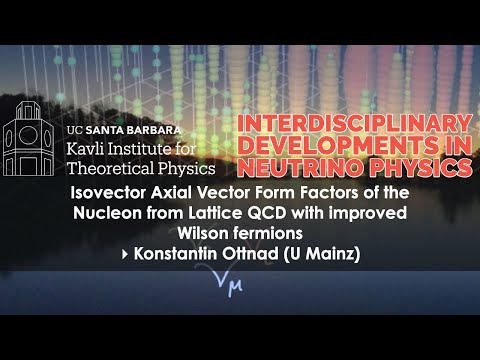Description:
Explore a conference talk on isovector axial vector form factors of the nucleon from lattice QCD with improved Wilson fermions. Delve into the research presented by Konstantin Ottnad from the University of Mainz at the Interdisciplinary Developments in Neutrino Physics Conference. Examine topics such as threepoint functions, ensembles, scaling, and tier 2 fit models. Gain insights into the advantages and practical applications of the research, as well as the results obtained. Learn about physical extrapolation techniques, including linear continuum infinite volume extrapolation and twostate fit vs plane summation. Understand the analysis strategy for excited states and physical extrapolation. Compare the physical form factor results to experimental data. This 32-minute presentation, hosted by the Kavli Institute for Theoretical Physics, offers a comprehensive look at cutting-edge research in neutrino physics and its interdisciplinary connections to astrophysics, cosmology, and gravitational waves.
Read more

Isovector Axial Vector Form Factors of the Nucleon from Lattice QCD - Konstantin Ottnad
Add to list
#Science
#Physics
#Neutrino Physics
#Astronomy
#Astrophysics
#Cosmology
#Gravitational Waves
#Data Science
#Data Analysis
#Experimental Data Analysis
#Particle Physics
#Quantum Chromodynamics
#Lattice QCD